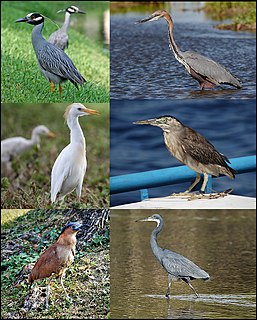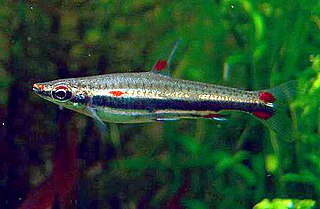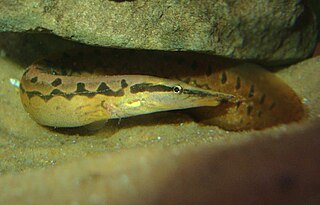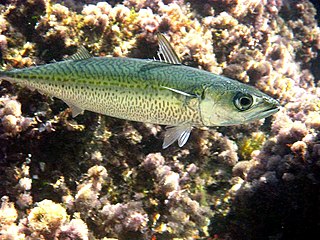
The herons are long-legged, long-necked, freshwater and coastal birds in the family Ardeidae, with 64 recognised species, some of which are referred to as egrets or bitterns rather than herons. Members of the genera Botaurus and Ixobrychus are referred to as bitterns, and, together with the zigzag heron, or zigzag bittern, in the monotypic genus Zebrilus, form a monophyletic group within the Ardeidae. Egrets do not form a biologically distinct group from herons, and tend to be named differently because they are mainly white or have decorative plumes in breeding plumage. Herons, by evolutionary adaptation, have long beaks.

Yanagi-ba-bōchō, yanagi ba, or yanagi, is a long and thin knife used in the Japanese cuisine. It is the typical example of the sashimi bōchō used to prepare sashimi and nigiri sushi.

The Lehigh River is a 109-mile-long (175 km) tributary of the Delaware River in eastern Pennsylvania. The river flows in a generally southward pattern from The Poconos through Allentown and much of the Lehigh Valley before enjoining the Delaware River in Easton.
A zigzag is a pattern made up of small corners at variable angles, though constant within the zigzag, tracing a path between two parallel lines; it can be described as both jagged and fairly regular.
Zigzag is a jagged, regular pattern.

The pencil fishes are a family (Lebiasinidae) of freshwater fishes found in Costa Rica, Panama, and South America. They are usually small and are known as ornamental fishes in aquaria, including popular fishes such as the various pencil fish and the splashing tetra.

Grevillea flexuosa, commonly known as zigzag grevillea or tangled grevillea, is a species of flowering plant in the family Proteaceae and is endemic to the south-west of Western Australia. It is an erect shrub with divided leaves, these lobes with three to five triangular lobes, and cylindrical clusters of cream-coloured to pale yellow flowers.

The zig-zag eel, also known as the tire-track eel, tire-track spiny eel or marbled spiny eel, is a species of ray-finned, spiny eels belonging to the genus Mastacembelus of the family Mastacembelidae, and is native to the riverine fauna of India, Bangladesh, Pakistan, Sri Lanka, Thailand, Vietnam, Indonesia and other parts of South East Asia. The species was described as Macrognathus armatus by Lacepède in 1800. Other common names for this popular aquarium species are leopard spiny eel and white-spotted spiny eel. This species is not only a popular aquarium fish but also as a food fish in its country of origin.
Zara Spook 9260 (1939–present) is a topwater type fishing lure. The lure is cast out and retrieved in a "walk the dog" fashion. It is supposed to mimic an injured fish and comes in many different fashions but the most prominent is the minnow type. Any fish that takes its prey from the water's surface would be considered a targeted species with this lure.

Herringbone, also called broken twill weave, describes a distinctive V-shaped weaving pattern usually found in twill fabric. It is distinguished from a plain chevron by the break at reversal, which makes it resemble a broken zigzag. The pattern is called herringbone because it resembles the skeleton of a herring fish. Herringbone-patterned fabric is usually wool, and is one of the most popular cloths used for suits and outerwear. Tweed cloth is often woven with a herringbone pattern.
Pyrrhulina laeta, known as the half-banded pyrrhulina or half-lined pyrrhulina, is a fish found near Pebas, Peru, and in tributaries of the Ampiyacu River. It is frequently confused with other species.
Pyrrhulina rachoviana is a small species of tropical fish from the family Lebiasinidae named in honor of the German aquarist Arthur Rachow. The type locality is Rosario, Argentina. A species is sold in the aquarium trade under the name Pyrrhulina rachoviana, but was probably imported from Brazil, not Argentina.
A zigzag stitch is variant geometry of the lockstitch. It is a back-and-forth stitch used where a straight stitch will not suffice, such as in reinforcing buttonholes, in stitching stretchable fabrics, and in temporarily joining two work pieces edge-to-edge.

Atlantic chub mackerel, also known as Tinker mackerel, is a pelagic schooling species of mackerel found in the Atlantic Ocean, the Mediterranean Sea, and the Black Sea. It was originally thought to be a subspecies of the chub mackerel Scomber japonicus colias.

Pyrrhulina is a genus of freshwater fishes found in tropical South America. Several of these species are popular aquarium fish.

Halichoeres scapularis, commonly called the Zigzag wrasse , is a fish species in the wrasse family native from the Indo-West Pacific.
Pyrrhulina elongata is a species of fish in the Pyrrhulina genus found in the Amazon basin, specifically within the Tapajós basin, in creeks and in small ponds. They grow no more than a few centimeters.
Pyrrhulina eleanorae is a species of fish in the Pyrrhulina genus found in the upper Amazon basin. They grow no more than a few centimeters.
Pyrrhulina marilynae is a species of fish in the Pyrrhulina genus found in the basins of the Tapajós and Xingu River. They grow no more than a few centimeters.









